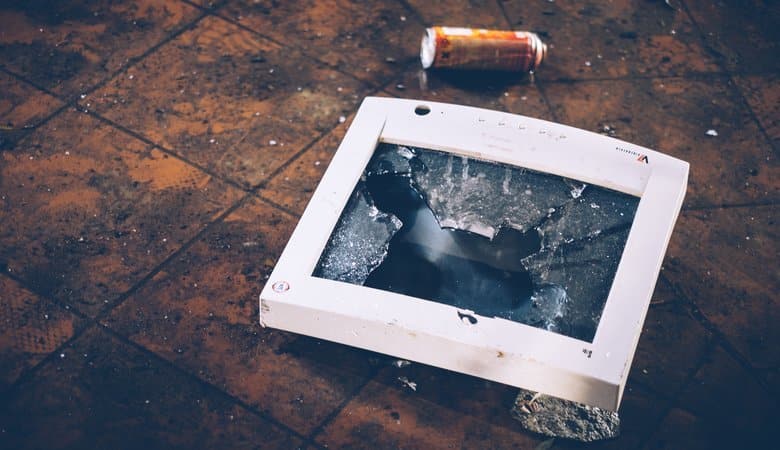Aussie technology helps tackle world’s growing e-waste problem
Words: Richard Holdcraft
E-waste is a by-product of the digital age in which we live and a big issue considering the world will generate around 50 million tons of it this year. In Australia, our e-waste output is growing three times faster than general municipal waste, and what to do with it is a serious problem.
Sending it to landfill is no solution, as e-waste contains dangerous metals such as lead, cadmium and mercury which can leach into the surrounding soil and groundwater, ultimately ending up in our bodies.
But there’s another good reason not to dump e-waste—it is rich in precious metals including gold, silver, copper, platinum, and palladium, as well as valuable bulky materials such as iron and aluminium and plastics that can be recycled.
Australian researchers at UNSW Sydney have unveiled a ground-breaking approach to the problem.
The Centre for Sustainable Materials Research and Technology (SMaRT Centre) has developed a prototype microfactory that can transform e-waste into valuable materials for re-use.
Founded by Professor Veena Sahajwalla, the SMaRT Centre works with industry, global research partners, NGOs and governments to develop innovative environmental solutions for the world’s biggest waste challenges.
Prof Sahajwalla says the microfactory is one of their proudest achievements to date.
“Our world-first e-waste microfactory, which was launched in April by NSW Environment Minister Gabrielle Upton, is designed to transform the components of discarded electronic items like mobile phones, laptops and printers into new and reusable materials that become inputs and feedstock for the manufacture of new products,’’ Prof Sahajwalla says.
“Our microfactories consist of a series of small machines and devices that use patented technology. The discarded e-waste devices, for instance, are first placed into a module to break them down.
“The next module involves a special robot to extract useful parts, another module uses a small furnace to separate the metallic parts into valuable materials, while another reforms the plastic into a high-grade filament suitable for 3D printing.’’
The modular microfactory units can operate on a site as small as 50 square metres, so they can easily be moved to wherever e-waste may be stockpiled.
“Our microfactories can not only produce high-performance materials and products, they reduce the necessity of expensive machinery, save on the extraction from the environment of yet more natural materials, and reduce the need of burning waste and dumping it in landfill,’’ Prof Sahajwalla says.
Other applications
The modular, easy-to-move microfactory concept is also being applied to waste streams other than e-waste.
“We are now building our first ‘green’ microfactory comprising multiple modules to take many of the recycled containers and materials put out in council bins, and other waste streams, and convert them into valuable materials,’’ Prof Sahajwalla says.
The social and economic benefits from this technology come on top of the environmental benefits, and Prof Sahajwalla believes the SMaRT Centre microfactories have the potential to transform the manufacturing landscape in Australia, especially in remote locations where the logistics of having waste transported and processed are often prohibitively expensive.
“This technology is especially beneficial for island markets and remote and regional towns,’’ she says. “These microfactories can transform waste where it is stockpiled and created, enabling local businesses and communities to not only tackle local waste problems but to develop a commercial opportunity from the valuable materials that are created.”
Way forward
As with any many revolutionary technologies, making the leap from research to commercialisation requires a helping hand, and Prof Sahajwalla says government has a key role to play.
“While we have proved the technology, the challenge is to translate it into commercial application,’’ she says. “Unless all levels of government involved in waste and recycling put incentives in place, business and councils will be slow to capitalise on the potential to lead the world in reforming waste into something valuable and reusable.’’
Nevertheless, the microfactory project is aligned with industry body the Advanced Manufacturing Growth Centre, and this has helped attract business interest in the technology. As a result, the SMaRT Centre is now in partnership with several businesses and organisations including e-waste recycler TES, mining manufacturer Moly-Cop and spectacle manufacturer Dresden, which is using recycled plastic to make spectacle frames.
“Microfactories are proven technology, we just don’t have enough of them,’’ Prof Sahajwalla says. “I believe Australia can lead the solution to the global waste problem.’’
Find out more about the latest industry trends at AWRE 2018, kicking off at ICC Sydney on 29-30 August, register free.
-
Subscribe to the latest industry news, insights and AWRE updates.
- Subscribe

